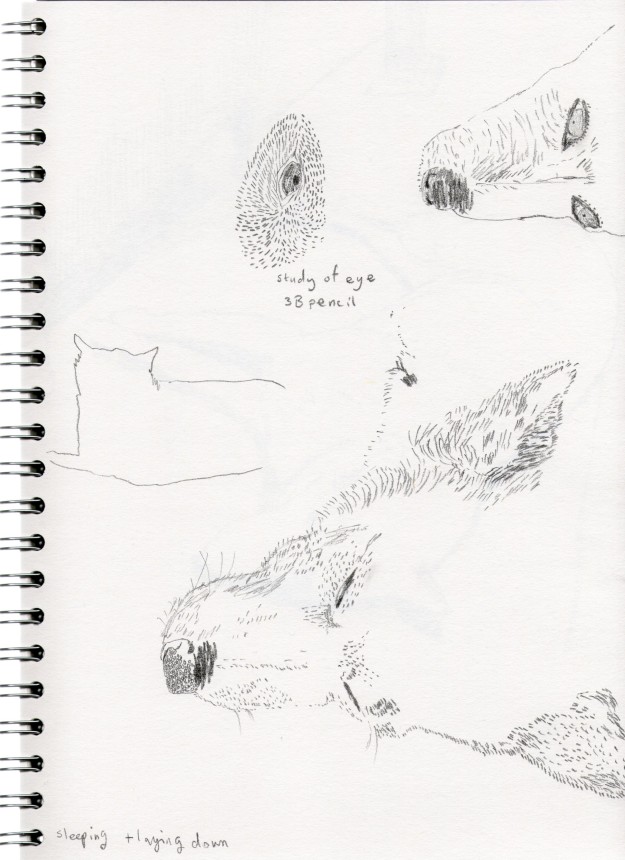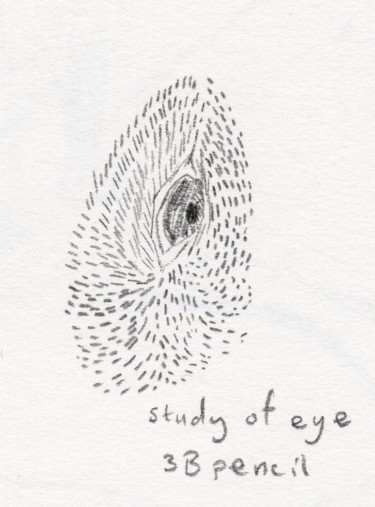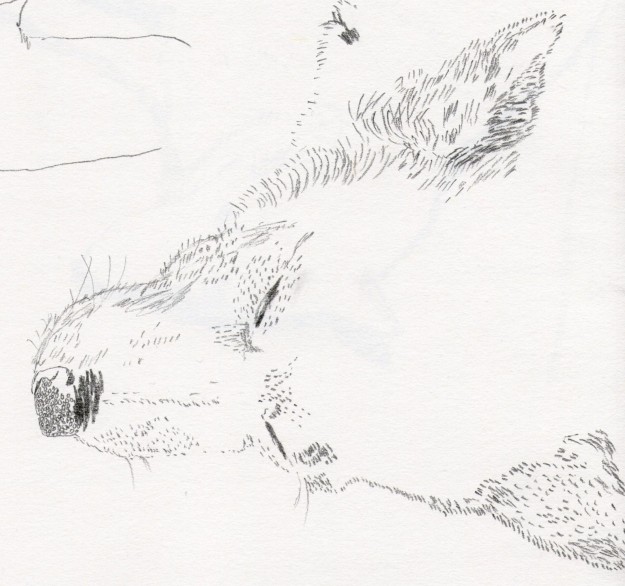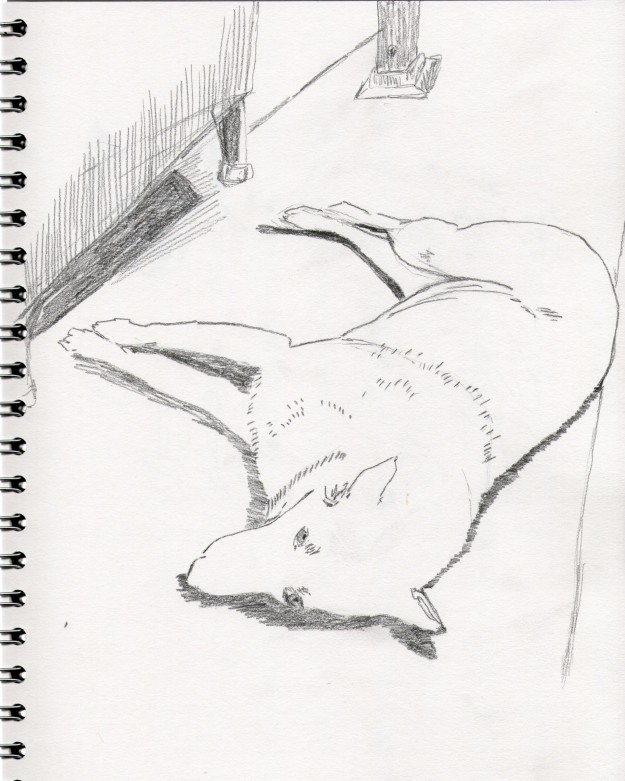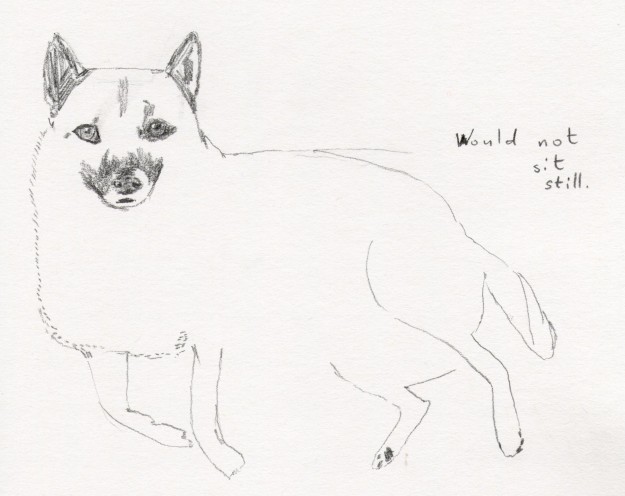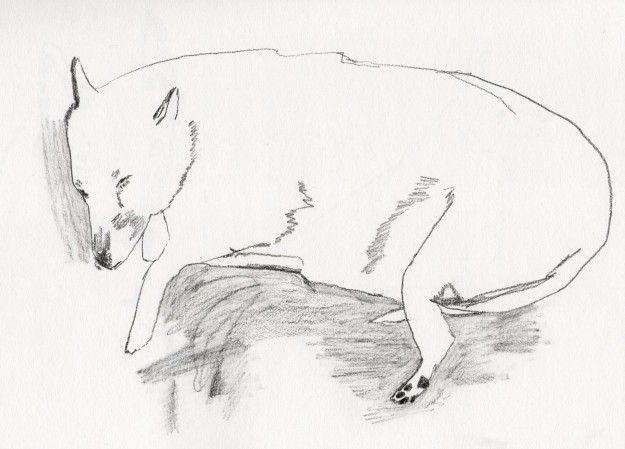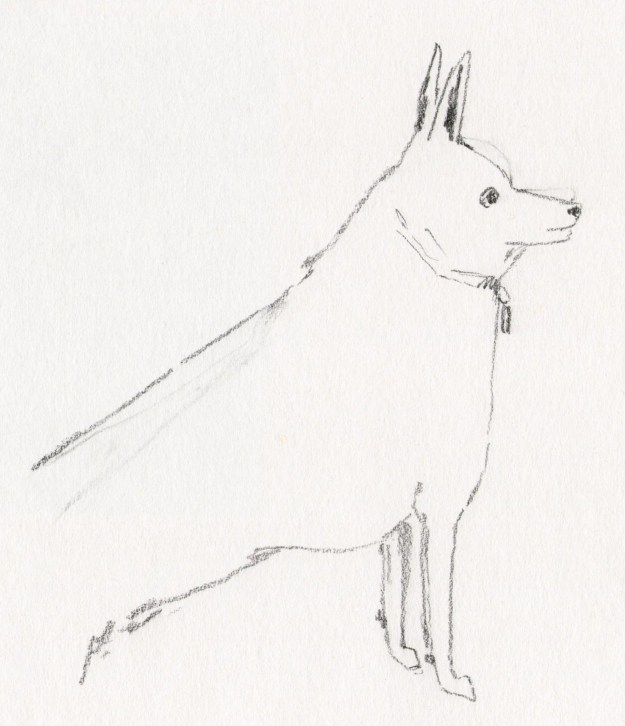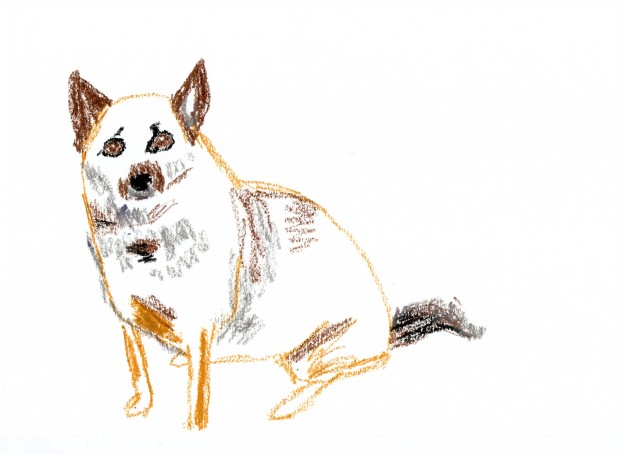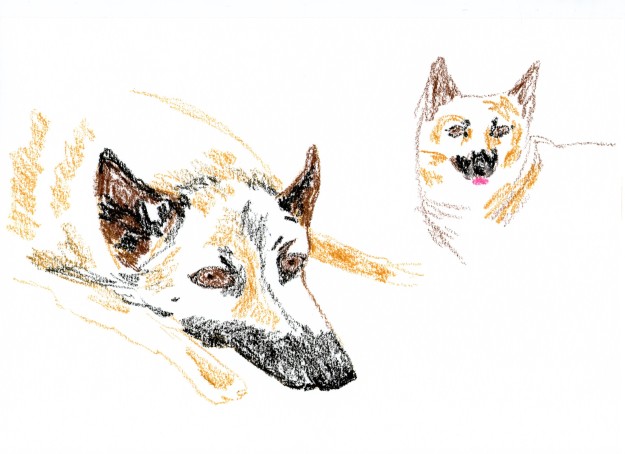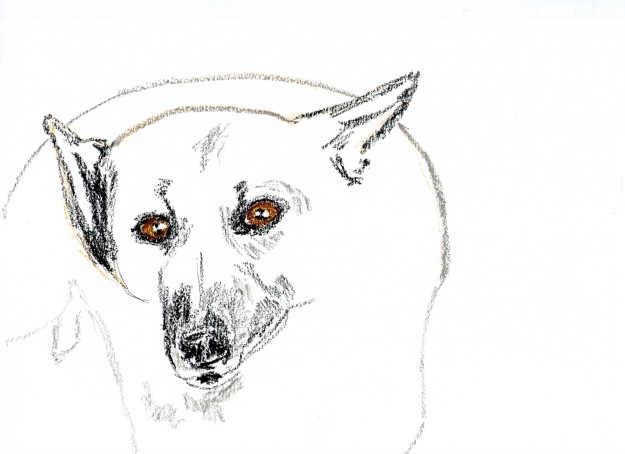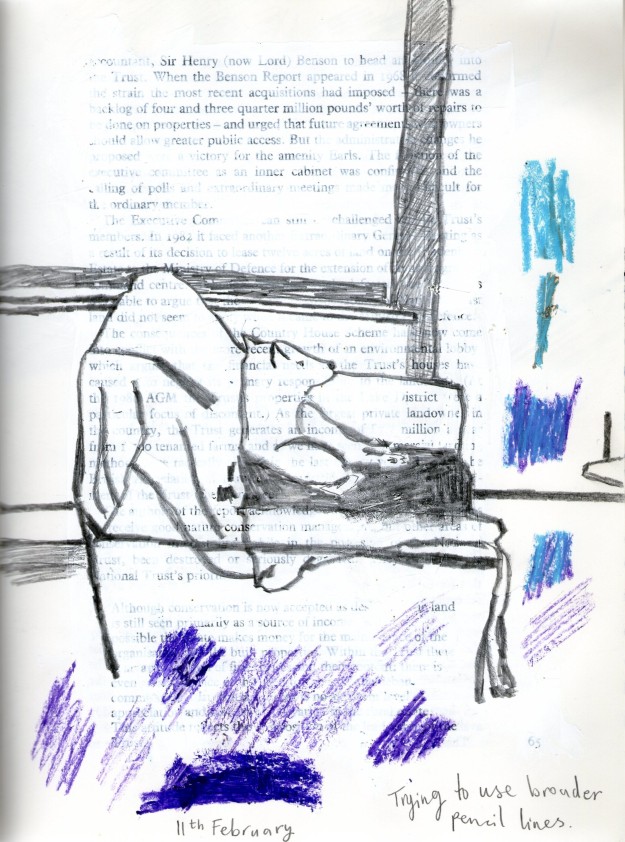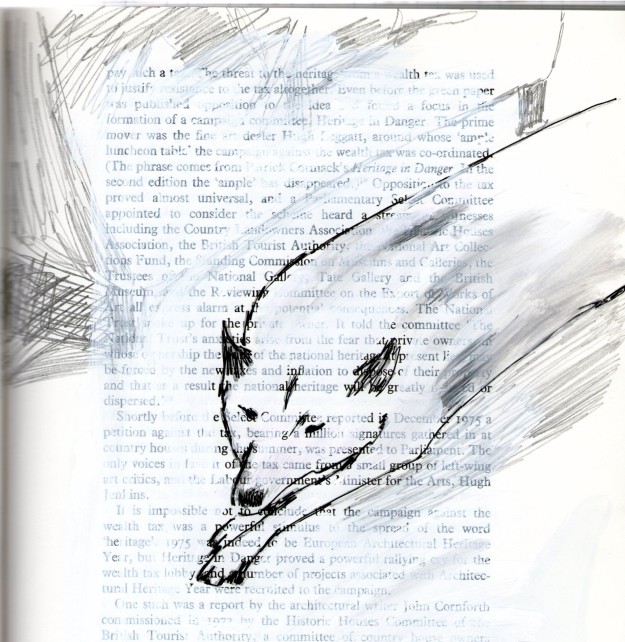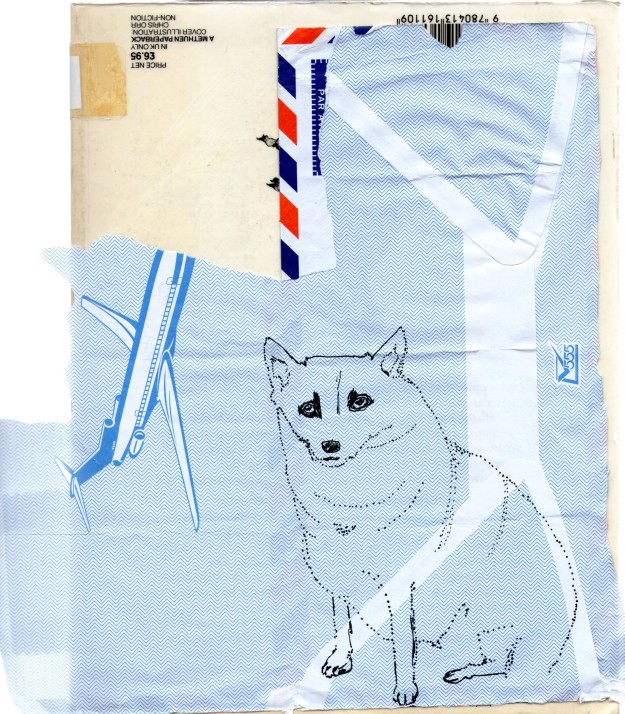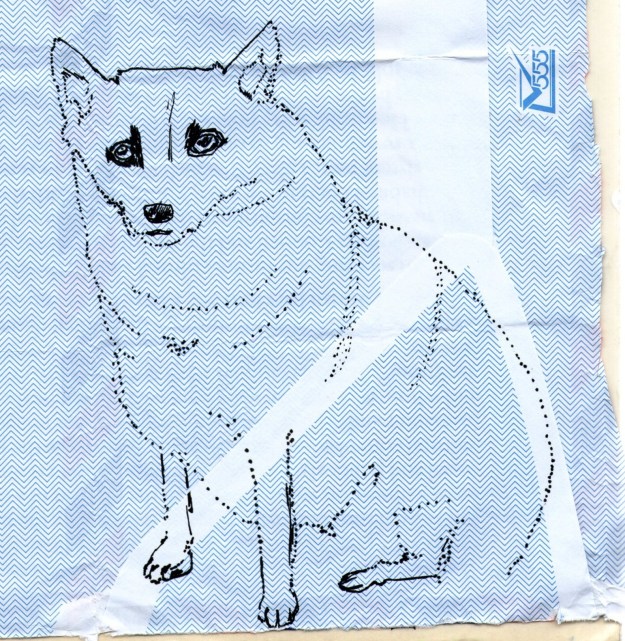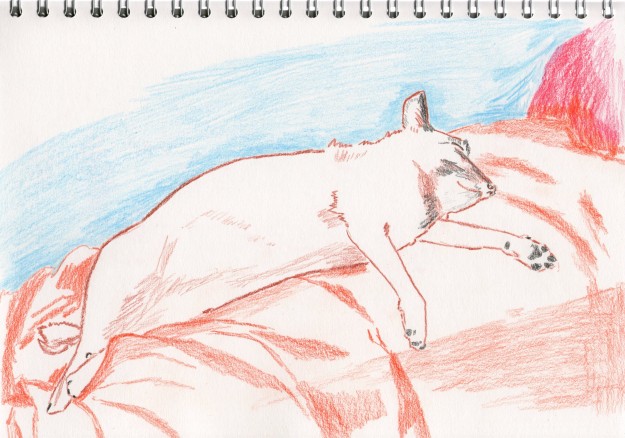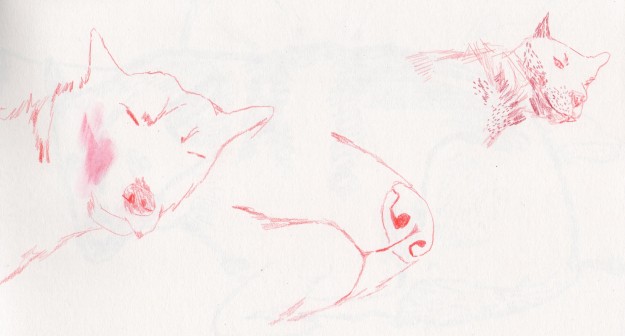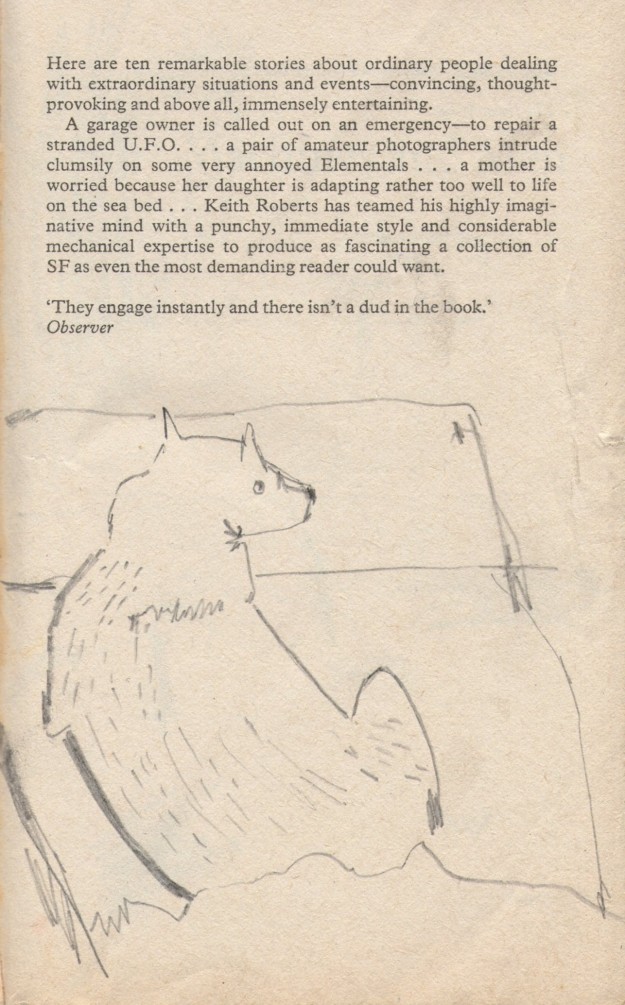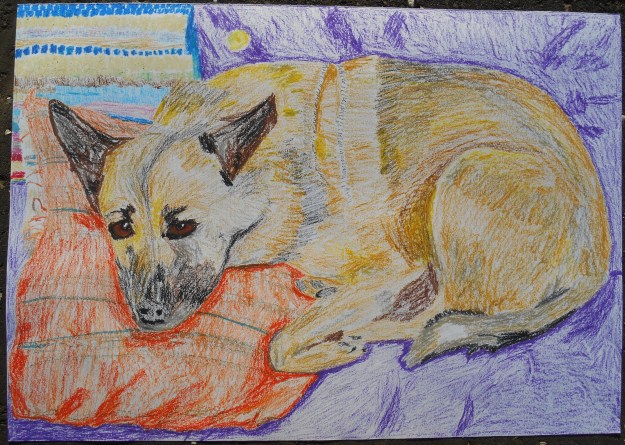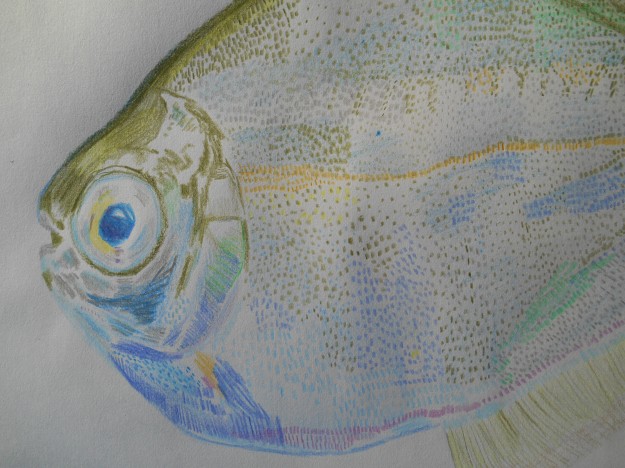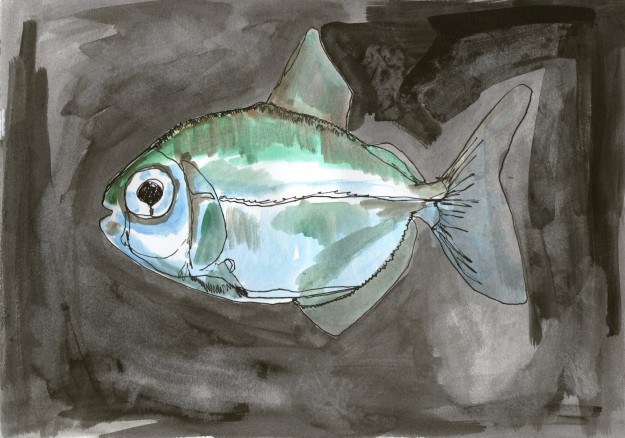Exercise: Grabbing the chance
Below are my first small sketches of our neighbour’s dog when he came to visit. I made drawings of him in black roller ball pen, and pencil. He hardly ever kept still for more than a moment, even when sleeping. So my drawings were made very quickly. (Click them to see full size view)
This drawing below was made with three different coloured pencils. It is a fairly small drawing, so I have made it larger for better observation.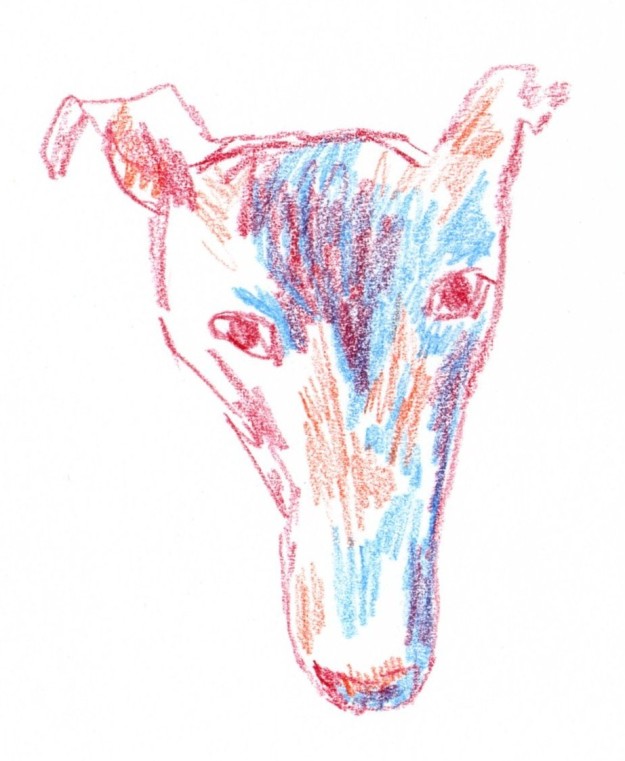
Here are a selection of pencil drawings. (They are all on an A4 sheet of paper).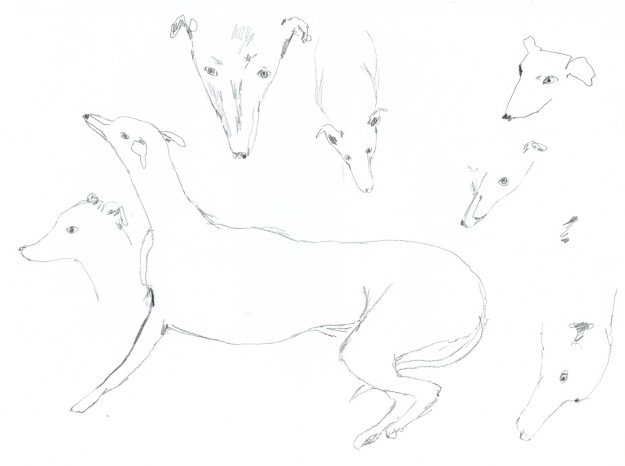
These first drawings are very quickly drawn, so mostly measured by eye. But they do observe the basic shapes which make up the dog’s form, and are fairly well in proportion. He is a whippet dog, and so has a proportionally small head and wiry body.
The drawings below are of a different dog (my very own dog). He sleeps more soundly so I have been able to draw some more measured drawings which take a little more time.
The above drawing is an example of perspective because he was laying down and his body viewed in the foreground is larger than it is further back in the drawing. I think that perhaps this would be clearer if I had been able to draw in the background, but there was not time on this occasion.
Below are a collection of pencil drawings of him, attempting to observe more detail.
Influenced by the way da Vinci draws all the hair on some of his cat drawings, I explored this technique of drawing the hairs. I also made an outline drawing of him sitting up.
The drawing in the upper right hand corner was made briefly because he moved; I think that the eyes are positioned wrongly and slightly too large for the rest of his face.
To the left I have enlarged the drawing I made of his eye to help me to view the effects.
I used pencil dashes or short lines to observe the directions of the lines of his hair around his eye. It is the correct way up because he was laying on his side.
I am pleased with the drawing of the eye, and the effects of the lines. Though this is a time consuming technique, it is worthwhile.
Potential problems of this way of drawing I think would be that this might make an image appear flat.
Below is a closer look at a drawing I made of his face. I am pleased with how effectively these short lines show the contours of the face. I used techniques to make sure the measurements of his face were in proportion.
Below is an even closer look at this drawing. I am pleased with this drawing because I think I have effectively described the texture of his hairy face and nose. I used tiny circles to draw his nose, which works well. I used longer lines for his whiskers which show how fine and delicate they are.
This drawing was unfinished because he got up and left; I think it is quite effective for observing his shape. His left eye is not positioned correctly.
Below is a drawing in another position, which did not last very long. I am pleased with the details observed of the eyes, although they are not symmetrical. His legs are not or do not appear to be in proportion with each other or with his head. I only sketched them in before he left.
The above drawing I am pleased with because I included shadow which I think makes the dog look more three dimensional.
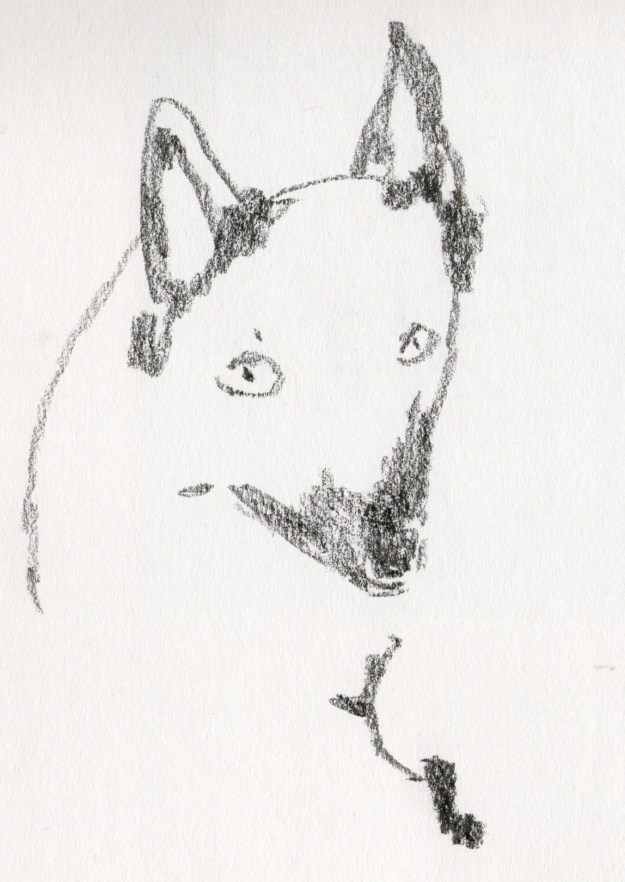
This drawing is around A5 size. I used an 8B graphite stick. I tried to hold it differently so that I used the broader side of the point.
Below are some oil pastel drawings. I am very pleased with oil pastels for this purpose – they are good for observing the texture of his hair and for creating the illusion of depth. You can make a range of quality of line with oil pastels.
Above is my drawing on a larger sheet of paper.
Click here for Research point: George Stubbs.
Exercise: Drawing a fish
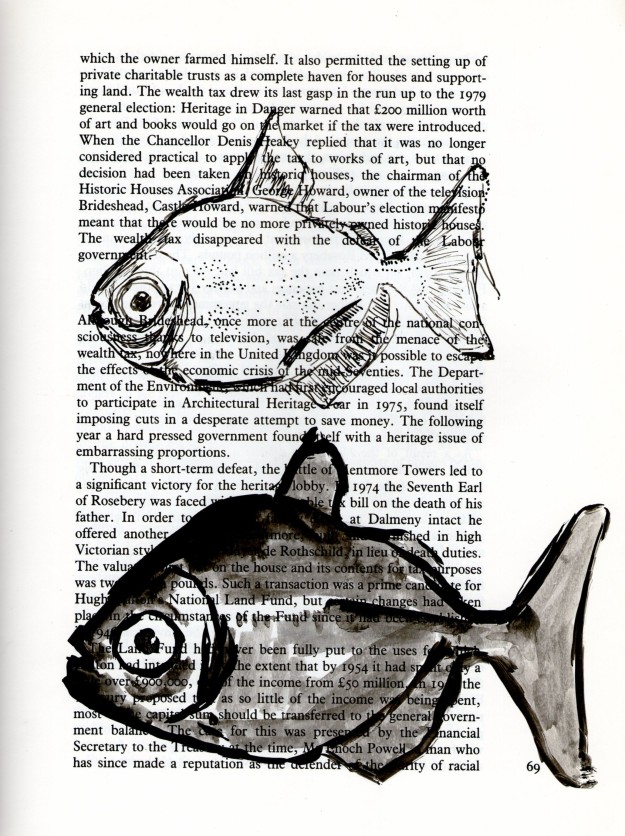
Another drawing on text paper. Two more drawings of the same fish. Acrylic ink. Detailed images of each below.
What were the main challenges of drawing animals?
I think that the first challenge is how quickly you have to work, because they move around so much. I found the best time for drawing was when my dog was deeply asleep. The second challenge was observing the texture of animals’ hair or scales. I also found it very difficult to draw the features of a dog face in proportion with each other and the rest of the body. But the main challenge was creating the appearance of soft, fluffy and spiky hair on animals.
Which media did you enjoy using most and which did you feel were best for the subject matter and why?
I enjoyed using oil pastels most because you can make striking images with just a few lines. Or you can build up a lot of detail and colour.
I think that pastels are best for observing colour and texture. On the other hand pencils and pens are very good for making quicker line drawings which can observe the movement and attitude of an animal. So it depends what sort of drawing you want to make.
Where can you go to draw more animals? Think about the sorts of places that will give you opportunities for animal drawing. Have you tried drawing a moving animal yet?
I think there are lots of places you could find animals to draw. There is the park, for dogs, the fields have rabbits and birds and horses. There is a field not far away with alpacas and some sheep. And there is a pond which sometimes has ducks and moor hens. I could also go to the coast and draw seagulls. Or to a larger park to draw geese. Now that the weather is better there are lots of outdoor possibilities.
I have not really drawn a moving animal yet. Like a running or jumping animal. But I have drawn swiftly for some drawings because dogs often don’t want to sit still.





